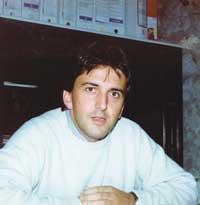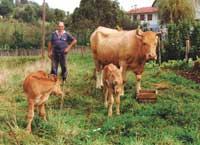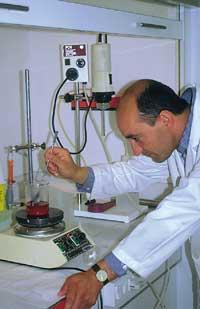5b and Leader II, land development and improvement programs
1997/12/01 Bengoa Ansa, Aitor Iturria: Elhuyar aldizkaria
ZETIAZ-Elhuyar: What are 5b and Leader II programs?
Xabier Arruti: The European Union, based on the problems and needs of each territory, is zoning. In this zoning, zones 5b are defined as areas requiring agricultural development. Target 5b and Leader II are applied in these regions. These two programs have been launched twice in the CAPV. In its first stage, it was in force in two Alava regions, but has now entered into force in several regions of the three territories of the ACBC and will last between 1994 and 1999. Therefore, the projects subsidized during these years will be subsidized both from Europe and from the Basque Administration (half from Europe and the other half from the Basque Administrations). The particularities of the Leader II Programme in relation to objective 5b are mainly two: on the one hand, for innovative projects and, on the other, the promoters of the Leader programme, Mendikoi, the Agricultural Development Institute and the Mountain Associations.
ZETIAZ-Elhuyar: Where are these programs carried out in Euskal Herria?
Xabier Arruti: In the CAPV there are 7 zones: Valles Alaveses, Montaña Alavesa, Rioja Alavesa, Arratia-Nervión, Estribaciones del Gorbea, Encartaciones and Tolosaldea-Urola. In Navarre, for its part, the operation of the 5b target is something more particular and the Leader II program covers different regions, especially in the north. As for the North Basque Country, it is worth mentioning that Aquitaine is integrated in the region and that there are different projects of the Leader II programme here. One of them is the so-called “interior Basque Country”.
ZETIAZ-Elhuyar: What criteria are used to select 5b fields?

Xabier Arruti: Above all, the decrease in population and the importance of the relative weight of agriculture compared to other sectors. It is that the Gross Domestic Product per inhabitant is lower than the European average, the deficiencies in terms of service, etc.
ZETIAZ-Elhuyar: What are the objectives of these programs?
Xabier Arruti: Promotion and improvement of agricultural activities, job creation, especially in industry and services. On the other hand, we must guarantee economic and social infrastructures. In fact, these subsidies are not limited to agricultural activities and the improvement of the living conditions of the agricultural regions in all its forms is encouraged. The key is the maintenance of the population of the agricultural regions. If people live, farmland will be worked and services will come on their own. Therefore, one of our main objectives is to put the means for young people to live in the villages. Population reduction can be considered the most serious problem in these regions.
ZETIAZ-Elhuyar: How do you see all these changes in mountain farming? For example, tourism has become very important in a few years.
Xabier Arruti: Changes in traditional agriculture are necessary. It is dangerous that all the people live only in agriculture, and in those places other elements must be introduced. Tourism-related services arrive and are beneficial anywhere. Sometimes farmers are very skeptical of any change and to some extent it is normal, but changes are necessary for the development of agriculture. At a time when wheat abandoned planting to form extensive pastures for maize and livestock, there was a great transformation that was possibly criticized by those who promoted it.
ZETIAZ-Elhuyar: Looking ahead, how do you see the development of mountain agriculture?
Xabier Arruti: Objective 5b and Leader II programmes were approved from 1994 to 1999. From there, it is not known whether these programs will continue in force, but it seems that significant changes are expected in the European Agricultural Policy, especially because the possibility of Eastern States joining the European Union is being studied. This seems to have meant a reduction in subsidies and a more selective selection. In any case, I believe that the most disadvantaged areas and the most dangerous areas of agriculture will continue to have subsidies, but that does, always promoting agricultural models that respect the environment.

Gai honi buruzko eduki gehiago
Elhuyarrek garatutako teknologia





